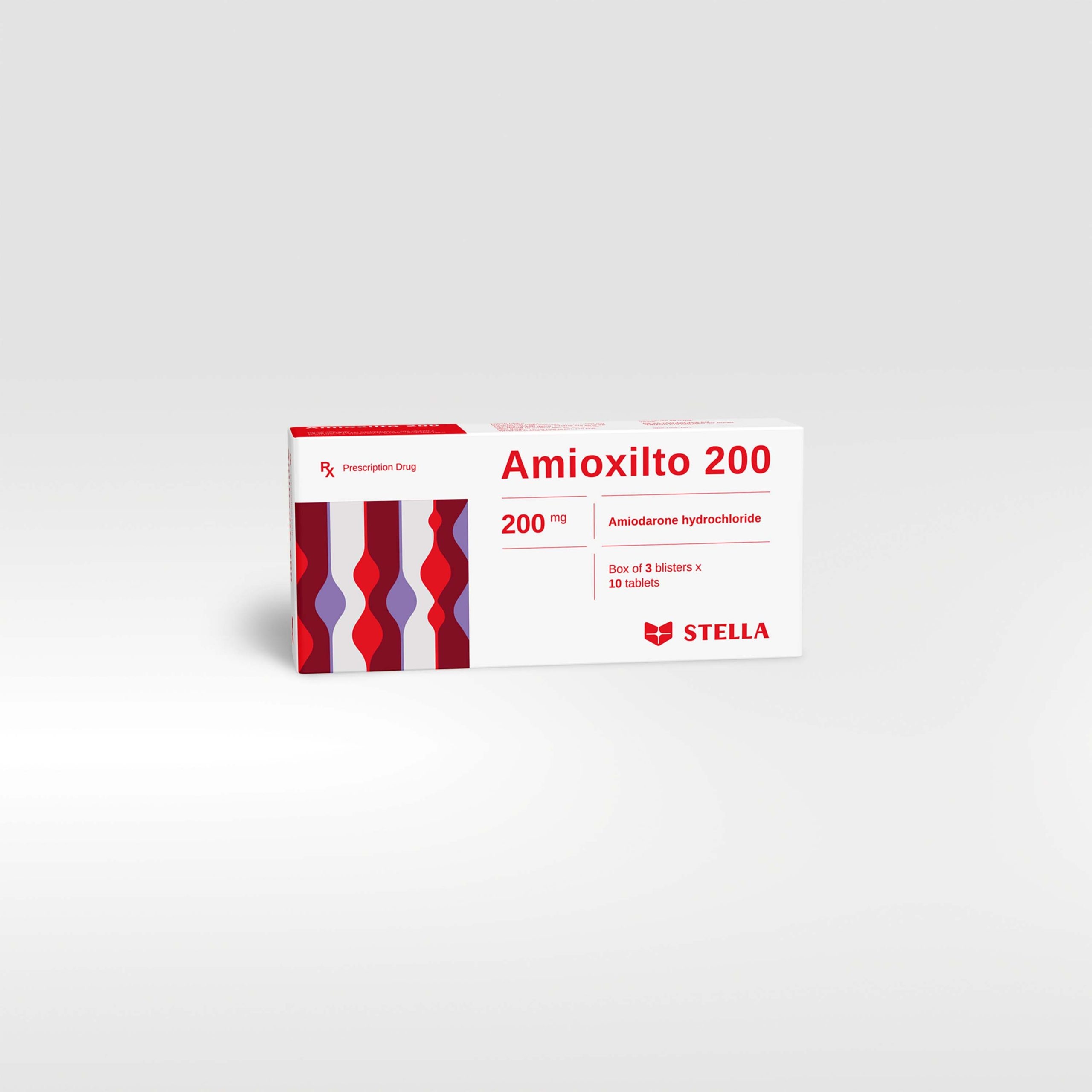Amioxilto 200 Rx
Amiodarone is considered a class III antiarrhythmic drug, but it possesses electrophysiologic characteristics of all four Vaughan Williams classes. Like class I drugs, amiodarone blocks sodium channels at rapid pacing frequencies, and like class II drugs, amiodarone exerts a noncompetitive antisympathetic action. One of its main effects, with prolonged administration, is to lengthen the cardiac action potential, a class III effect. The negative chronotropic effect of amiodarone in nodal tissues is similar to the effect of class IV drugs.
| Pack size | Box of 10 tablets, 30 tablets |
| Shelf-life | 24 months |
| Composition | Amiodarone hydrochloride |
| Dosage forms and strengths | Tablet: 200 mg |




